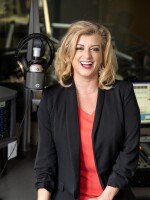In May 2020, then President Trump signed an Executive Order which called for the expansion of sustainable U.S. seafood production. The National Oceanic and Atmospheric Administration – NOAA – was tasked with proposing 19 sites in US federal waters for aquaculture – also known as seafood farming. Eight of those sites are in the Santa Barbara Channel.
"The Executive Order aligns with NOAAs policies and our position on aquaculture for decades," explained Diane Windham, NOAA Fisheries West Coast Region Aquaculture Coordinator.
She has been overseeing the proposals for suitable sites for various types of aquaculture, including finfish, shellfish, macroalgae (kelp), or multi-species aquaculture.
"There's a much more diversified portfolio that defines aquaculture than just finfish," said Windham.
"At current population levels we are not meeting the demand for seafood so we are importing upwards of 75% of seafood from outside of the country and half of that comes from foreign aquaculture," said Windham.
She said that often aquaculture is not as well-regulated outside of the U.S.

The proposal has met some local opposition. Jake Schwartz from Don’t Cage Our Oceans told KCLU, the proposed fish farms are bad for the local environment and for local fishermen.
"The main environmental reason is the pollution that they cause", said Schwartz.
"The antibiotics that these facilities pump into the water, then mixes with the fish feed and excess fish waste and creates this sludge, which can create toxic algae blooms and even dead zones in the water where there's not enough oxygen to support even basic marine life," he said.
"We think that community here in Santa Barbara want the government to stand with local fisherman and support our local sustainable fishing practices," said Schwartz.
But Windham says NOAA are listening to the concerns of environmental campaigners and local fisherman.
"We have made the effort to work closely with the commercial fishing communities and while we may not always be on the same page, there's absolutely concerns and opposition - we stayed at the table and invited them to the table to have these discussions and that has helped and been a trust-building exercise", she said. "We really appreciate having that kind of engagement."
Windham said, "There's no reason aquaculture and commercial fishing can't co-exist."
"We are balancing conservation of marine resources with uses of those marine resources. It's not a perfect science but we are led by the science and we use the science to inform our decision making," said Windham.
Windham said the industry has evolved and improved their working practices
She added, "We all need healthy oceans, including aquaculture."



